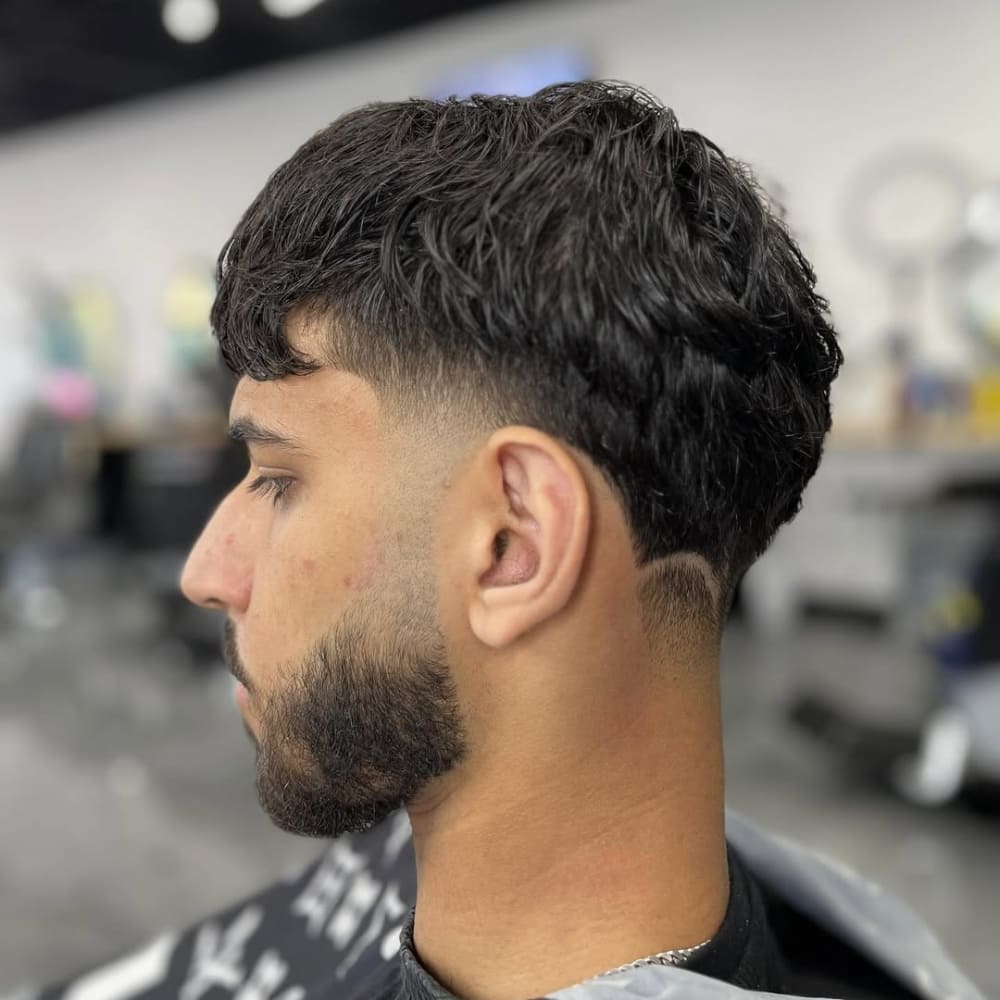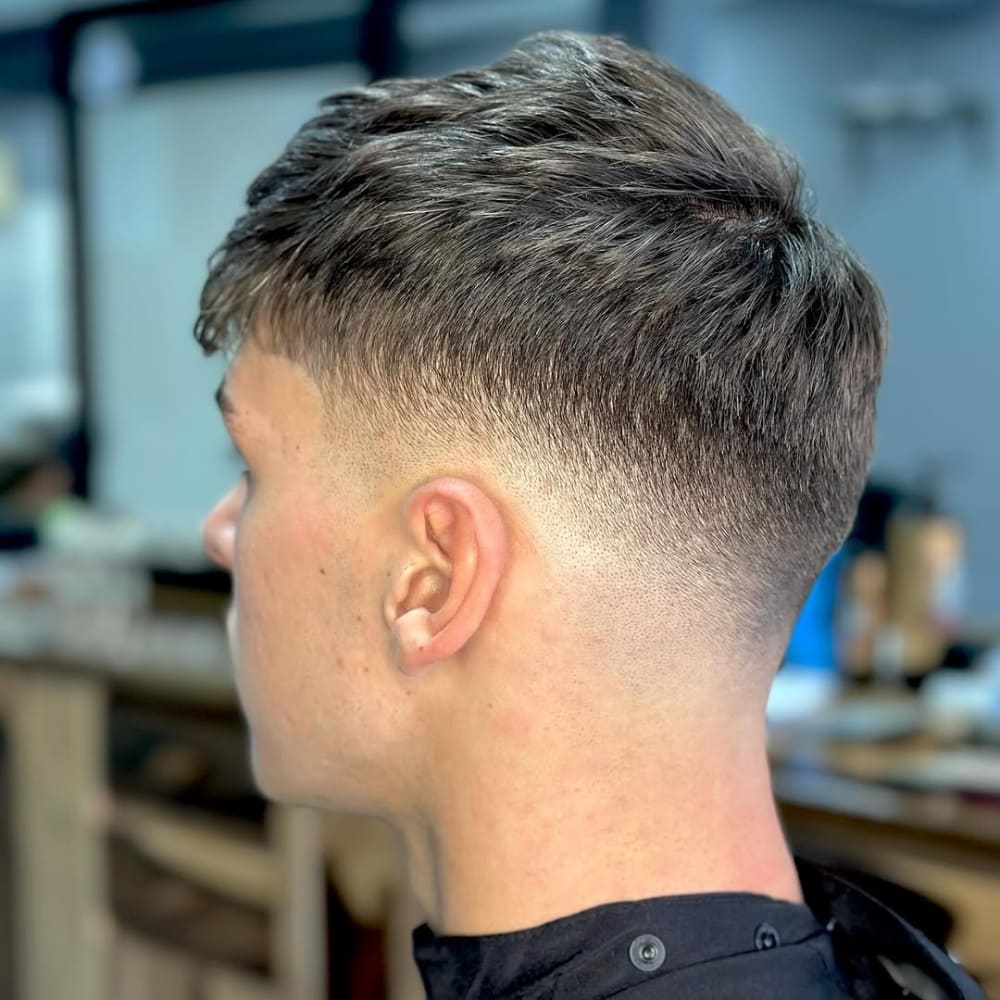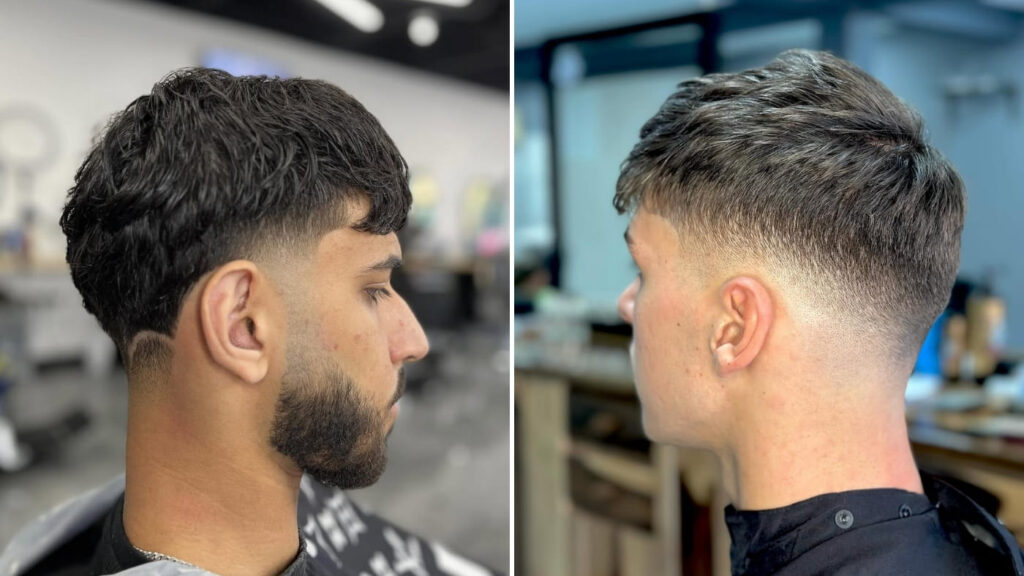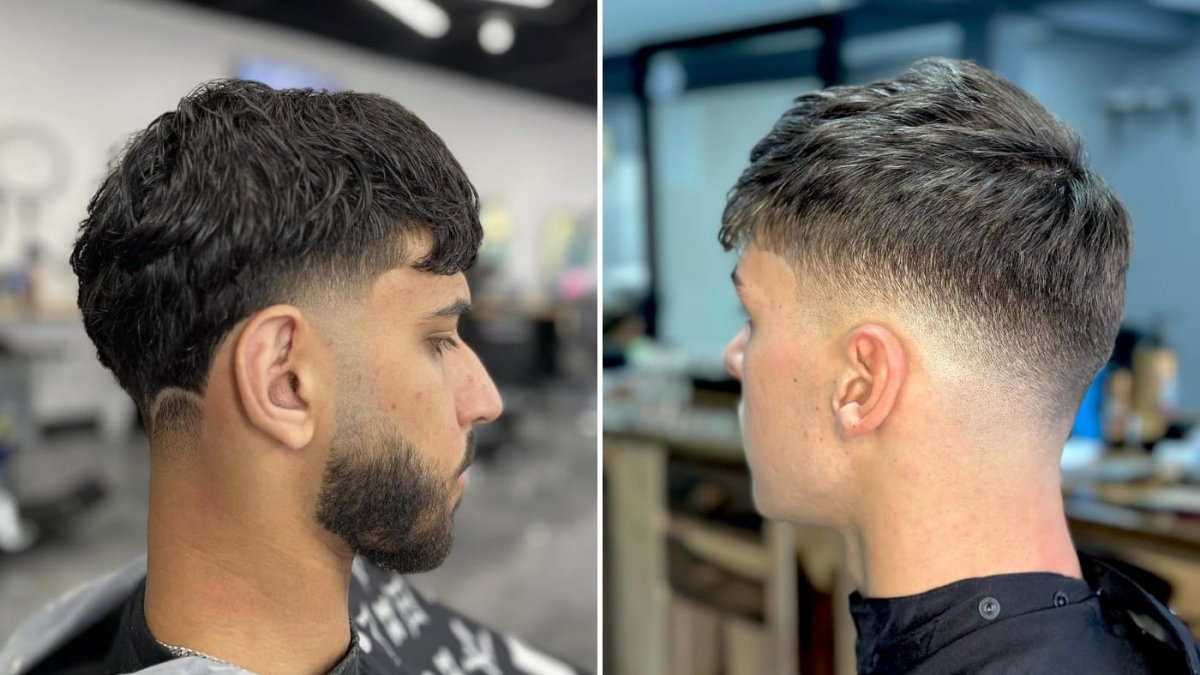Looking for a sharp, stylish haircut that’s not too extreme? The mid taper vs mid fade dilemma is a common one for men. Both offer a polished look, but understanding the nuances of each style is key to finding the perfect fit.
This guide breaks down the key features of the mid taper and mid fade, helping you choose the right cut for your hair type, lifestyle, and desired level of contrast.
What Is a Mid Taper?

The mid taper is a subtly refined haircut that offers a clean, classic look. The hair gradually shortens from the top down the sides and back, creating a smooth, blended transition. Unlike a fade, which features a more dramatic reduction in length, the mid taper maintains more hair, providing a balanced and natural appearance.
This makes it an excellent choice for men who appreciate a polished yet low-maintenance style, suitable for any setting. The mid taper enhances the overall shape without an overly dramatic contrast, ideal for those who prefer a timeless and sophisticated aesthetic.
When considering a mid taper vs mid fade, the taper is often preferred for a softer, more gradual transition.
What Is a Mid Fade?

@ezequiel__gamarra
The mid fade is a sharp, modern haircut characterized by a more dramatic transition than the mid taper. The hair is clippered close to the skin, often blending into the skin itself, around the midpoint of the head.
This creates a striking contrast, making it a bold choice for men who prefer a clean, edgy look. The mid fade excels with shorter haircuts, enhancing structure and sharpening the overall shape. It also complements textured or styled hair on top, adding depth and definition.
When considering a mid taper vs mid fade, the fade is ideal for those who prefer a high-contrast style and are willing to commit to regular touch-ups to maintain its crisp appearance.
Mid Taper vs Mid Fade: Key Differences
Choosing between a mid taper vs mid fade ultimately depends on how each style transitions from longer to shorter hair. The following breakdown highlights the core differences to help you find the perfect fit.

Blend & Transition
- Mid Taper: The mid taper offers a subtle, gradual transition. The hair blends smoothly, maintaining length on the sides and back. This understated look is ideal for those who prefer a well-groomed yet classic style. The blend is achieved by gradually increasing the clipper guard size as the barber works their way up the sides and back, creating a seamless transition from the longer hair on top to the slightly shorter hair at the nape and sideburns.
- Mid Fade: The mid fade creates a sharper, more defined look. The hair is clippered close, often fading to the skin, around the midpoint of the head. This results in a bold, eye-catching contrast, perfect for modern, high-contrast styles. The barber typically starts with a very low guard size or even a foil shaver at the very bottom and then rapidly increases the guard size to create the sharp, defined fade. The point at which the fade begins (the midpoint) is crucial to the overall look.
Maintenance & Grow-Out
- Mid Taper: The mid taper is low-maintenance and grows out naturally. The retained length on the sides means fewer touch-ups are required. Regular trims every 3-4 weeks will keep the taper looking sharp. These trims typically involve tidying up the edges and refining the taper.
- Mid Fade: The mid fade requires more frequent touch-ups (every 1-2 weeks) to maintain its crisp, clean lines. The close-cropped hair grows out quickly, diminishing the sharp contrast. This style is best suited for those who don’t mind regular barber visits. Touch-ups for a mid fade involve not just trimming the edges but also re-fading the sides to maintain that crisp, defined look.
Versatility & Styling Options
- Mid Taper: The mid taper’s versatility shines with various hair lengths and styles. It provides a clean foundation for looks ranging from classic side parts, comb-overs, and slick backs to textured crops. The clean lines provide a polished foundation for these styles, allowing the texture or overall style to be the focal point while keeping the look neat and professional.
- Mid Fade: The mid fade excels with shorter, structured haircuts like buzz cuts, crew cuts, textured crops, and pompadours. The sharp contrast adds a dramatic, stylish finish. The fade accentuates the volume and definition of these styles, adding a modern edge to buzz cuts and crew cuts while providing a sharp backdrop for textured crops and pompadours.
Professional vs Edgy Look
- Mid Taper: The mid taper projects a professional, classic image. The subtle transition blends seamlessly with various hairstyles, making it an excellent choice for business settings, formal occasions, and even casual settings. Its understated elegance makes it suitable for a wide range of professional fields.
- Mid Fade: The mid fade conveys a modern, edgy aesthetic. The striking contrast commands attention, making it ideal for those who prefer a bold, fashion-forward look. This style is often seen in more creative fields, fashion-forward settings, or among those who prefer a more assertive, contemporary image.
In the mid taper vs mid fade debate, the taper offers a subtle, natural transition and lower maintenance, while the fade delivers a sharp, modern look with higher upkeep. The mid taper is a versatile and professional choice, while the mid fade is a bolder, more contemporary option.
Mid Taper vs Mid Fade: Which One Is Best For You
Ready to decide between a mid taper vs mid fade? This section will help you determine the best fit based on your individual preferences and lifestyle. Consider the following:
Choose a Mid Taper If:
- You prefer a subtle, natural transition: You appreciate a clean, well-groomed look without a dramatic contrast. The blend between the longer hair on top and the shorter sides and back is smooth and seamless.
- You want a versatile style suitable for any setting (professional or casual): The mid taper’s understated elegance makes it appropriate for a wide range of environments, from corporate offices to weekend outings. It’s a safe and stylish choice for any occasion.
- You have medium to longer hair on top: The mid taper complements medium to longer hair, providing a clean and polished foundation without competing for attention. It allows the length and style of your hair on top to be the focal point.
- You prioritize low maintenance and even grow-out: The mid taper requires minimal upkeep and grows out naturally, making it a great choice for those who prefer a low-fuss style. Regular trims every 3-4 weeks are sufficient to maintain its shape.
- You have a rounder face shape: The subtle taper can help add definition and elongate a rounder face.
- You have wavy or slightly curly hair: The mid taper can help manage wavy or slightly curly hair while maintaining a polished look.
Choose a Mid Fade If:
- You favor a bold, high-contrast look: You prefer a more dramatic and eye-catching style with a sharp distinction between the longer hair on top and the closely cropped sides and back.
- You prefer shorter, structured hairstyles (e.g., buzz cuts, crew cuts, textured crops): The mid fade’s dramatic contrast enhances shorter, more structured hairstyles, adding a modern and edgy feel. It accentuates the clean lines and sharp angles of these cuts.
- You want a sharp, defined appearance: The mid fade offers a crisp, clean look that exudes confidence and style. It’s a popular choice for those who want a contemporary and fashionable haircut.
- You are willing to commit to regular touch-ups: Maintaining the mid fade’s sharp lines requires more frequent barber visits (every 1-2 weeks) due to the rapid regrowth of the closely cropped hair.
- You have a more angular face shape: The sharp lines of the mid fade can complement and highlight angular features.
- You have thick, dense hair: The mid fade can help manage and control thick, dense hair while showcasing its texture.
Ultimately, the key factors in the mid taper vs mid fade decision are the level of contrast you desire and your commitment to maintenance. Consider your lifestyle, hair type, and personal preferences. Consult with your barber to discuss which style best complements your face shape and hair type for a truly personalized result.
Conclusion: Mid Taper vs Mid Fade: Making the Right Choice
Choosing the right haircut—mid taper vs mid fade—depends on your personal style, hair type, and lifestyle. The mid taper offers a subtle, blended transition, providing versatility and easy maintenance. It’s a great choice for those who prefer a classic, understated look. In contrast, the mid fade delivers a sharper, more defined contrast and a bolder, more modern aesthetic, but requires more frequent touch-ups.
Consider your desired level of contrast and your commitment to upkeep. While both styles offer a polished finish, a consultation with your barber is essential for achieving the perfect cut tailored to your features.
Ultimately, the best haircut is the one that makes you feel confident and comfortable. Consider your face shape, hair type, preferred styles, and lifestyle when making your decision. If you’re still unsure, a consultation with a skilled barber is invaluable. They can assess your individual features and hair to recommend the ideal taper that enhances your natural assets and fits seamlessly into your grooming routine.
A great haircut isn’t just about following trends; it’s about choosing a style that reflects your personal aesthetic and empowers you to look and feel your best.




